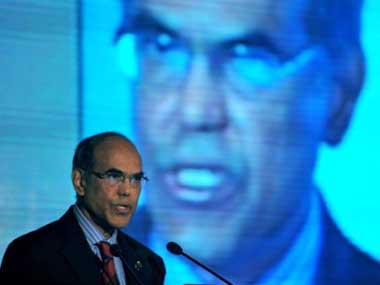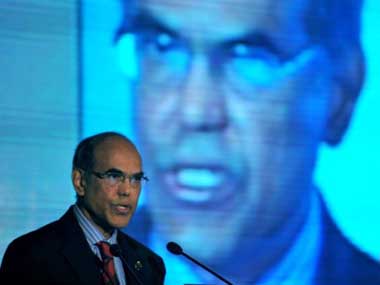Chandigarh: India’s growth story is “credible” and the move to open up the economy to global supermarket chains will help growth and controlling inflation, Reserve Bank of India (RBI) Governor Duvvuri Subbarao said on Friday.
“It’s commendable that government has taken the initiative. Let’s hope that it will improve the logistics chain and supply chain management in agriculture,” Subbarao said in a speech in Chandigarh.[caption id=“attachment_140291” align=“alignleft” width=“380” caption=“Reserve Bank of India, Governor, Duvvuri Subbarao. Reuters “]
 [/caption]
[/caption]
Late Thursday, the government approved 51 percent foreign direct investment in the supermarket sector, paving the entry of firms such as Wal-Mart, Tesco and Carrefour into one of the world’s largest untapped markets.
“It’s important for not only raising overall growth but also important for containing inflation and improving quality of life over 50 percent of population,” Subbarao said.
Opening up the retail sector to global players has been a much awaited reform but has been long hobbled by political differences. The Congress-led government’s biggest ally Trinamool Congress is opposed to the move.
The central bank chief said that inflation needs to be brought down to 5 percent initially and then even lower, consistent with India’s integration with global economy.
Subbarao said the current inflation situation is a consequence of both supply shocks and demand pressures.
Monetary tightening needs to be supplemented by supply side measures to raise potential economic output, he said.
“Raising agricultural production and productivity is, important for containing price pressures, raising rural incomes and making growth more inclusive,” Subbarao said.
India’s inflation, which is largely driven by high food and global commodity prices, plus expansive fiscal policies, is the highest among major economies in Asia. Its wholesale prices rose more than expected in October as the cost of food and fuel increased.
The high inflation print, above 9 percent for the 11th month, was further evidence of the RBI’s inability to achieve a breakthrough in its fight against inflation despite 13 rate rises since March 2010.
In its 25 October mid-quarter review of monetary policy, the RBI had said that a rate hike may not be warranted if inflationary pressures start to ease by December.
Slowing growth, stubbornly high inflation, rising interest rates, political gridlock, gloom in the West and a sliding rupee have conspired to dampen investor and corporate sentiment in Asia’s third-largest economy.
The Reserve Bank of India has lowered the country’s growth forecast to 7.6 percent for the current fiscal year ending in March from 8 percent previously.
Subbarao says a reduction of federal and state fiscal deficits are important steps for a stable marco environment.
India’s fiscal deficit during April to September was 2.92 trillion rupees, or 70.8 percent of the full-year target, government data showed. Most expect it to breach the 4.6 percent of GDP target for the fiscal year.
The government said it would sell debt worth Rs 2.2 lakh crore, sharply above the budgeted Rs 1.67 lakh crore in the October to March period.
Subbarao said that India being a emerging economy with a partly open capital account, floating exchange rate and a monetary policy that takes into account global developments, has to continue to manage the “impossible trinity”.
The impossible trinity refers to the economic hypothesis that a country simultaneously cannot have a fixed exchange rate, an open capital account and an independent monetary policy.
Reuters
)